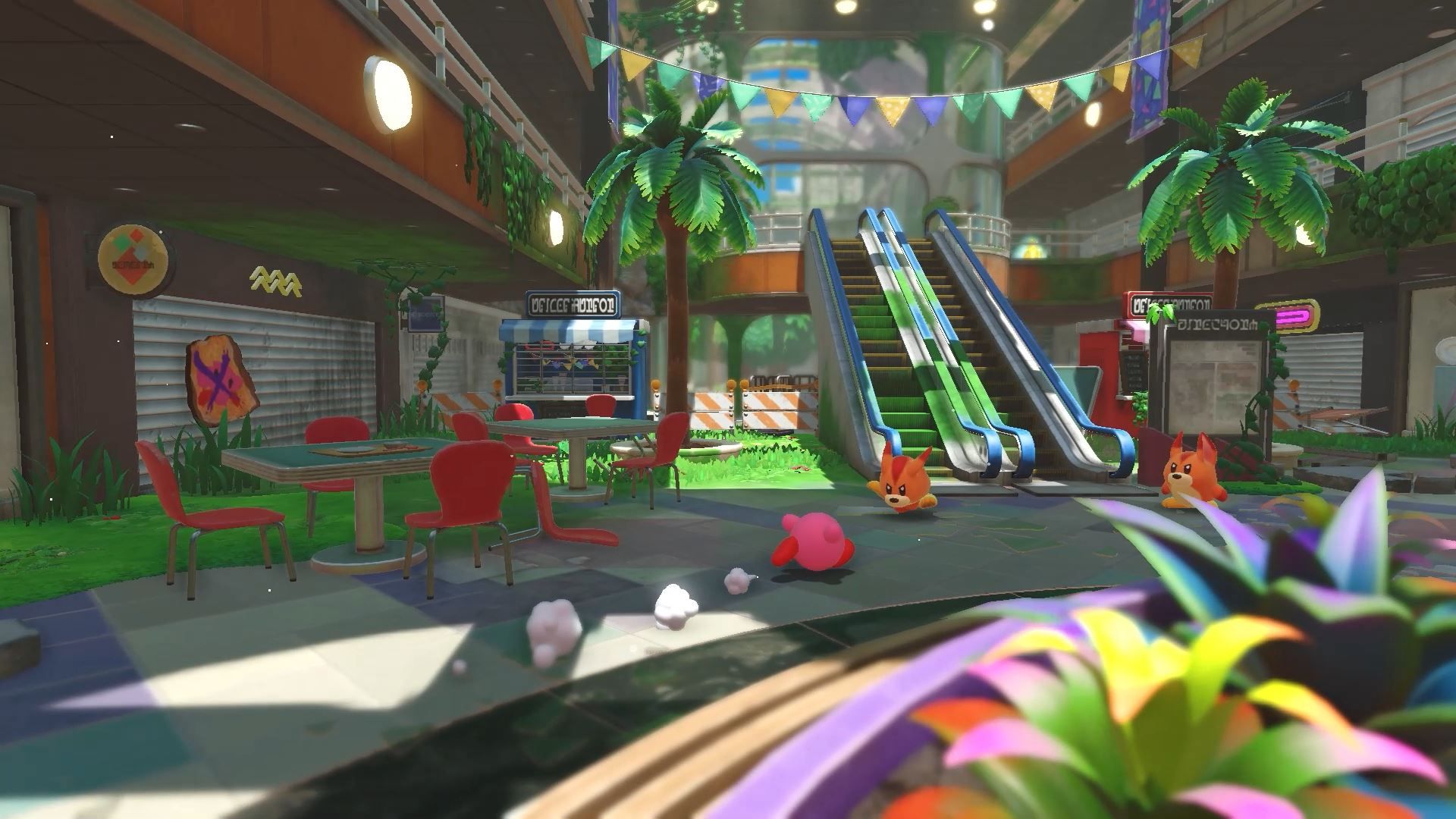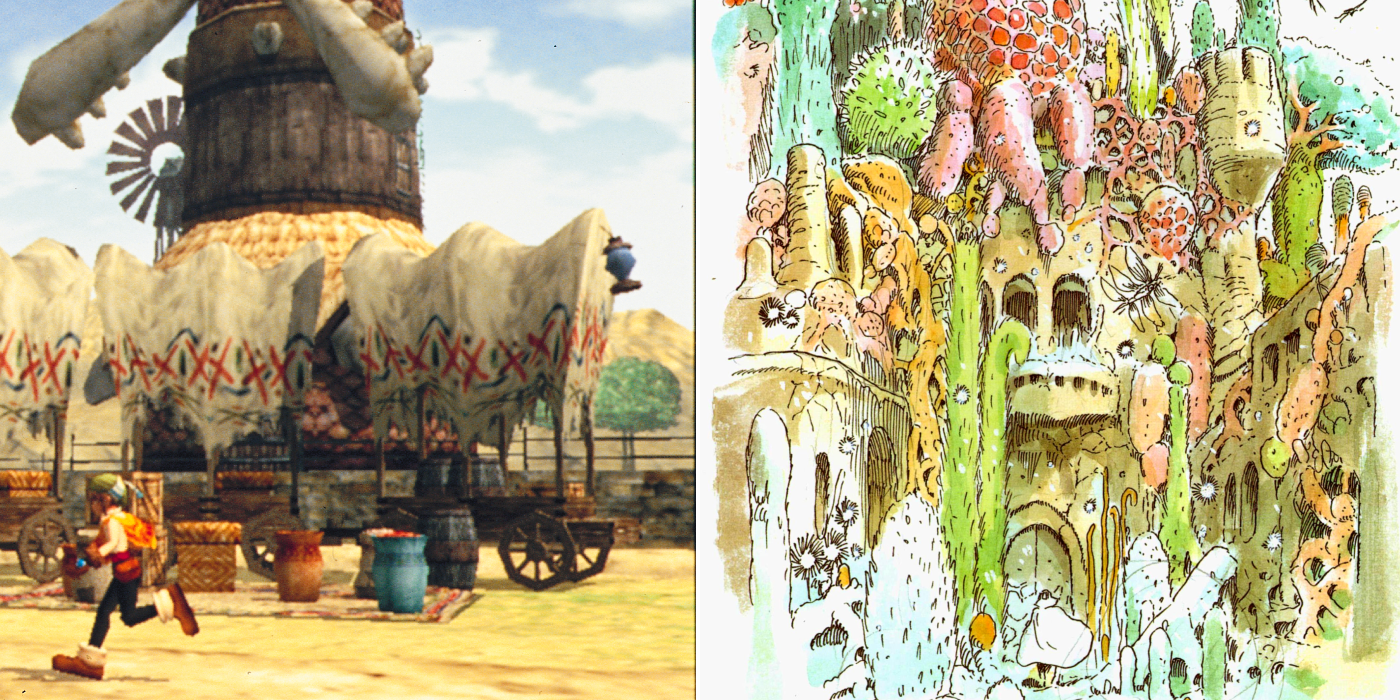Post-Post-Apocalypse: The Beauty of a Forgotten World
A different sort of post-post-apocalypse with a different kind of hero

We're used to apocalypse fiction that shocks us — zombies, decaying cities, and empty convenience store shelves are familiar images that come to mind when approaching the mid and post-apocalyptic catalogue. There is a pervasive heaviness to these stories, unspoken hopelessness that holds significant cultural value, but has also largely dominated the genre for decades.
Perhaps breaking these conventions is what draws me to Kirby and the Forgotten Land. In a landscape of dark apocalypse fiction, it's refreshing to see Nintendo craft an abandoned world that remains beautiful. The game also occupies a very specific genre niche that I love: not apoc or post-apoc, but "post-post-apoc".

Post-post-apocalypse (let's call it PPA for short) is less about the destruction of the world itself, and more about the after. Once the casualties and damages have been tallied up, human beings do what we've always done: rebuild. In PPA settings, people are less in shock or destitution and more in tentative optimism and apprehension. It's about the modest towers we build to replace fallen skyscrapers, the gentle first steps toward recovery after the storm. As a result, the genre tends to be more about re-civilization and how that affects survivors. It takes a more melancholy, haunted angle as opposed to a gritty, darker one. It's also a fresh, interesting niche that serves both the surface-level cuteness and hidden cosmic horrors of the Kirby series incredibly well.
The world of Forgotten Land is well into its rebuilding stage — in the absence of human beings (or whatever species truly inhabited the planet), animals thrive. The beasts who have reclaimed fields, cities, and oceans add another layer of character to the player's experience. Their presence is felt through both enemy encounters and charming set-pieces; I fondly recall a bushel of Awoofies forming a single-file line to order hot dogs in Wondaria Remains. My goal was to avoid them and leave them to their meal, but unfortunately, they broke the line to attack Kirby on sight, leaving me with no choice but to retaliate. I'm still a bit guilty over it, truth be told. It's their world to live in and take care of now, isn't it? I can't help but feel like a voyeuristic trespasser, but I also can't tear my eyes away from the carefully-constructed beauty I see.
In Nintendo's fourth "Ask the Developer" column, the team at HAL Laboratory gave players a window into Forgotten Land's development cycle. "We did speak with our designers on a regular basis to make sure this game's new world didn't seem too scary," says Tatsuya Kamiyama, the game's Director. "Abandoned ruins can make you feel like you're playing a horror game... In order to blend this setting with Kirby's usual style, we added a bright blue sky and colorful plant life(...)." General Director at HAL, Shinya Kumazaki, added that "rather than decaying ruins with evidence of an ancient human civilization, you explore ruins that show the prosperity and joy of what once was. We tried to make it seem like a beautiful place that has merged with nature, even though the people that built it are nowhere to be found."

Go-kart tracks, shopping centers, and haunted neon funhouses with still-functional spring traps serve as time capsules for a world that players were never around to remember. A gentle melancholy fills these spaces; I can feel the weightless ghosts sitting in empty cafe chairs at Alivel Mall, and even smell the mochas and tea cakes they must have shared on sunny afternoons. Buoys still sway in Everbay Coast's clear waters. A glistening clocktower still chimes on the hour at Winter Horns. As Kamiyama explains further, "our designers also had the idea to add billboards and signage written in the local language. Little things like that give players the sense that this world was a fun place to live, once upon a time."
In the days leading up to Forgotten Land's release, fans were quick to point out some screenshots' resemblance to Nier: Automata. Having completed both games, I'm inclined to say they had a point — while drastically different in tone, both titles touch upon a similarly wistful "after" in the post-post-apoc genre. The most obvious stylistic analogues to Forgotten Land in Automata may be Pascal's Village and the Amusement Park. Pascal's Village, seated on the outskirts of the Forest Kingdom, is a safe haven for machines with bright greenery and sunshine; stubby little robot children play, seeing only joy in the world they've inherited from mankind. They're not unlike Kirby in this way, showing a childlike wonder at their surroundings and any visitors to their home. Even beyond the cradle of that tiny village, the machines live in a state of naïve optimism, performing some half-remembered pantomime of the world that came before.

In a similar vein, Level-5's classic action RPG Dark Cloud (and its sequel Dark Chronicle) is set in the aftermath of a devastating cataclysm caused by a supernatural force. Players navigate procedurally-generated dungeons and collect items that can be used to repair the ruins of towns across their nation. Much like Kirby helps the Waddle Dees build a safe haven in the new world, the player uses the "Georama" mechanic in the Dark Cloud series to construct new homes and public venues. These parallels illuminate one of the most effective choices in making Forgotten Land feel so bright and hopeful — Kirby, in all their childlike whimsy, always finds a way to make the most of a difficult situation.

Post-post-apocalypse is about guidance, and more poignantly, about perseverance. Kirby emulates that spark of hope even when faced with space-time distortions, eldritch gods, and landing far, far away from home (and even the horrors of working food service). Forgotten Land reminds us that even in empty, desolate places, there is beauty to be celebrated. There is wonder yet unknown even in great loss.
